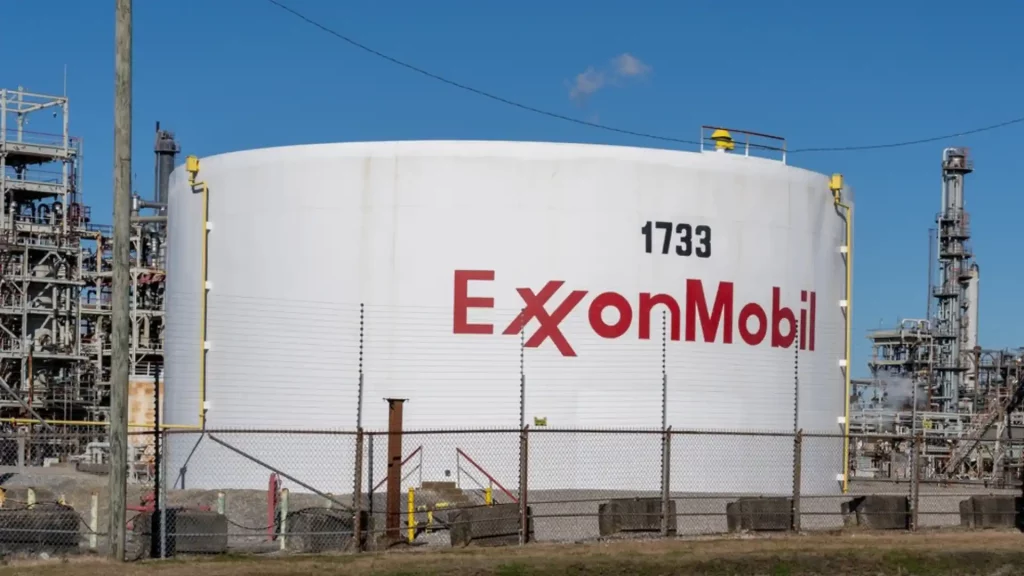The deal would allow Exxon to enhance its output in the Permian region to the equivalent of 2 million barrels in 2027
Exxon Mobil Corp buys Pioneer Natural Resources for $59.5 billion making it Exxon’s largest takeover in two decades. Exxon’s new move comes in as it plans to become the major producer of shale oil. In an all-stock deal, Exxon will pay $253 per share, according to the statements released on Wednesday. This will also be Exxon’s biggest buy after it merged with Mobil Corp 24 years back and is also the largest corporate acquisition announced this year.
Based on the closing price on Oct.5, the transaction amounts to an 18% premium for Pioneer investors, when the news of the acquisition began to be known. This deal, if finalised, will make Exxon a major firm in the industry and help in scaling up its production to nearly 4.5 million barrels of oil in a day. This is 50% more than the next biggest producer.
The deal would allow Exxon to enhance its output in the Permian region to the equivalent of 2 million barrels in 2027. Exxon has also promised to reduce the carbon dioxide emissions from Pioneer assets to reach zero by the year 2035. The firm’s inventory of sites that are to be drilled will expand and give access to a lot of potential onshore wells that can be bought online within months. This will help Exxon succeed in keeping up with the global demand. Even if the crude oil prices plunge, the acquired assets will bring in profits.
The combined entity will oversee the equivalent of 16 billion barrels of crude reserves in the Permian region. Many big oil companies were skeptical about the capacity of the Permian region and whether the wells could produce enough crude over a long period of time to reap profits. But over time it became clear that easy-to-drill, cost-effective shale wells helped the companies increase production whenever it is required. This is again a radical turn from the ways of major oil giants’ offshore mega projects that spend millions of dollars and years of planning. The Permian had become the most productive oil field in the Western Hemisphere which also helped the United States to become one of the top oil producers.
Exxon had been looking forward to another significant acquisition in the Permian for quite some time now. When the pandemic happened, oil prices were affected, and the company’s finances as a result were influenced poorly. Then the Russia-Ukraine conflict changed the game. Exxon had been focusing on cutting costs and was getting benefits from the investments it made after the pandemic.
The aftermath of Russia’s invasion of Ukraine left no sector untouched, particularly the oil industry. Exxon, a major player in the energy sector, had already been shifting its approach, focusing on cost-cutting and leveraging pandemic-era investments. However, the invasion caused oil prices to surge, leading to record profits for Exxon, totaling $59 billion in 2022. This financial windfall empowered the company to pursue a groundbreaking deal with Pioneer.
This deal, while promising, is expected to face significant antitrust scrutiny from the Federal Trade Commission. President Joe Biden has called on the commission to investigate the high gasoline prices, and he singled out Exxon’s record profits last year, accusing the company of making “more money than God.”
Speculation regarding a potential Exxon-Pioneer merger has been circulating since April. It began when Scoot Sheffield, the CEO of Pioneer, announced his retirement plans for the end of the year. Sheffield, a pivotal figure in the Permian basin for over four decades, is credited with architecting the shale boom that transformed the United States into an oil powerhouse.
Sheffield’s remarkable tenure of over 20 years as the head of Pioneer stands as one of the lengthiest among public CEOs in the American oil industry. His journey in the Permian basin began over 40 years ago when major oil companies like Exxon had shifted their focus away from the region in pursuit of overseas crude.
However, as innovations in drilling and fracking, primarily developed for natural gas fields, were adapted for oil reserves around 2010, Pioneer was well-positioned to become one of the fastest-growing oil producers in the industry.
Citigroup played a pivotal role, acting as the lead financial advisor for Exxon, while Centerview Partners provided financial advisory services, and Davis Polk & Wardwell served as the legal advisor. On the other hand, Goldman Sach Group Inc., Morgan Stanley, Petrie Partners, and Bank of America Securities took on the financial advisory role for Pioneer, with legal advising handled by Gibson, Dunn & Crutcher LLP.
This game-changing move had an immediate impact on the stock market. Exxon’s shares experienced a 4.1% drop to $105.96 in New York, while Pioneer saw a modest 0.6% rise. The energy sector and the broader market are closely watching the outcome of this deal, which could potentially reshape the industry’s landscape.
